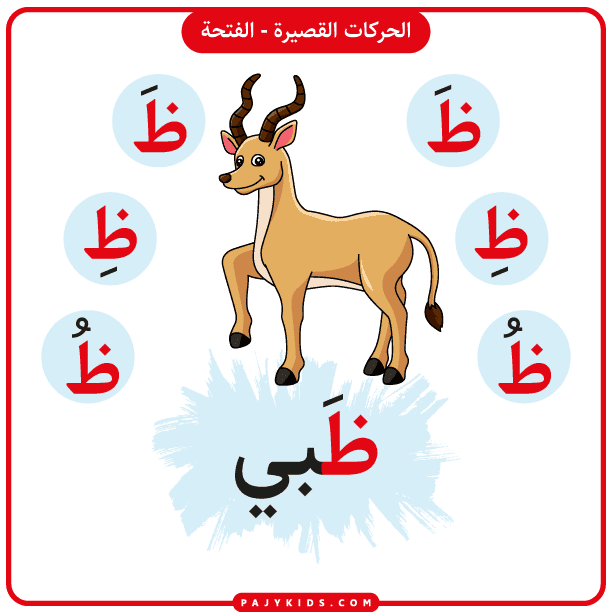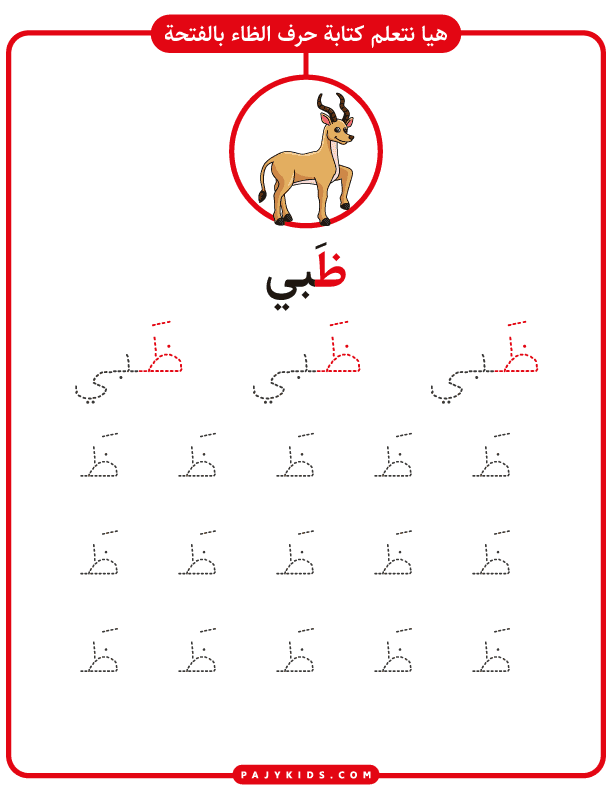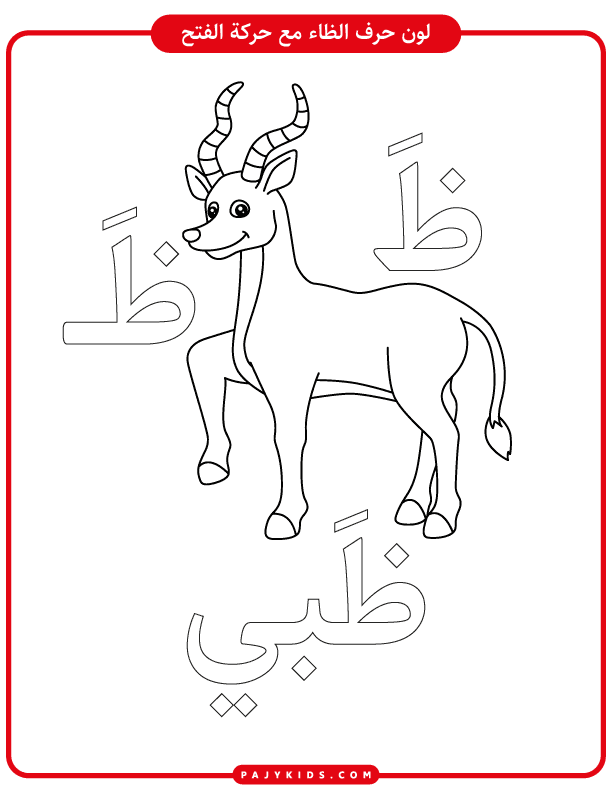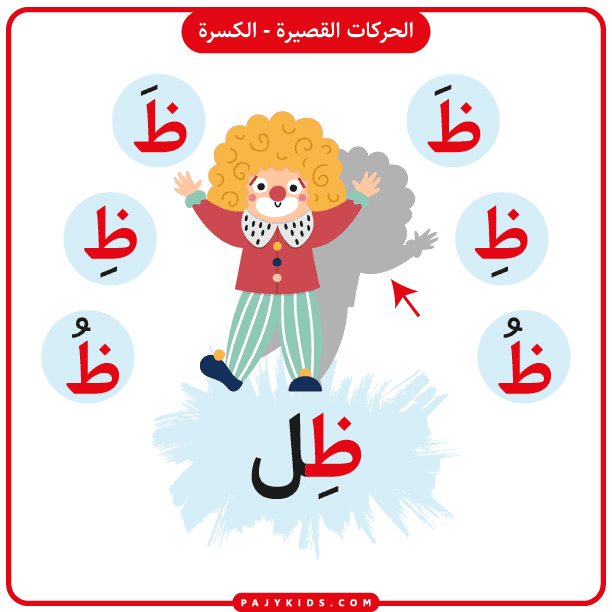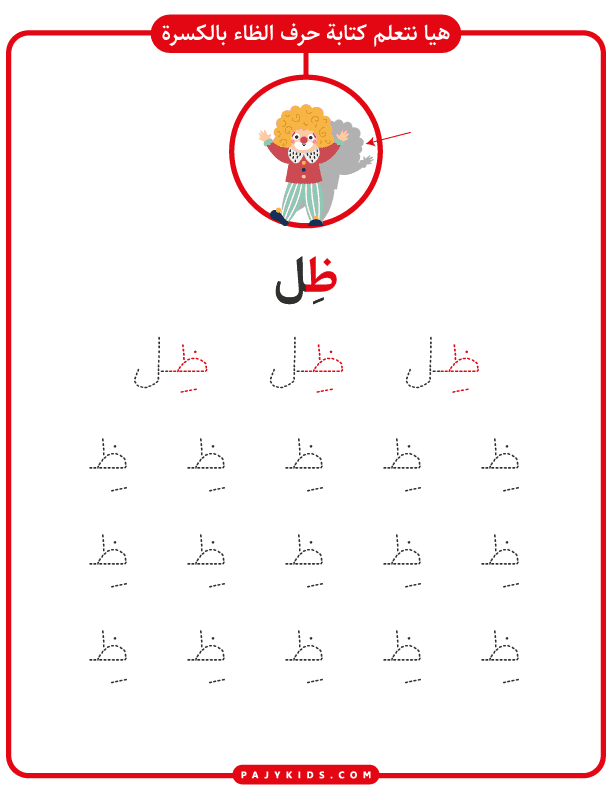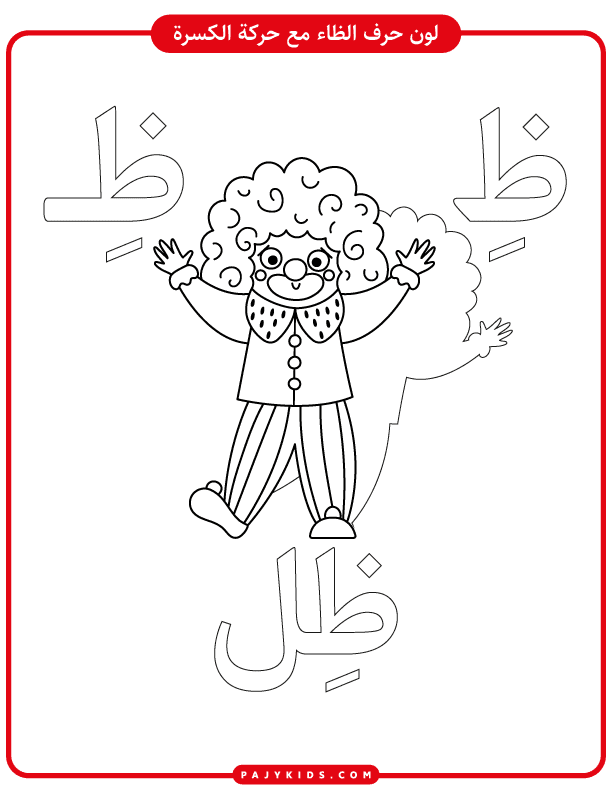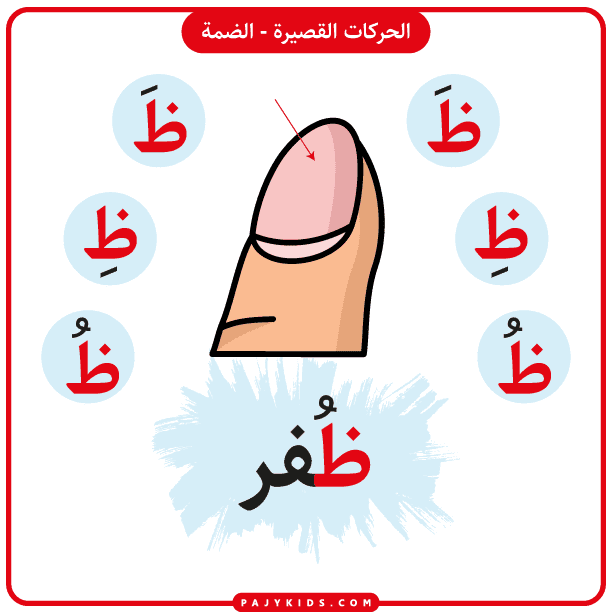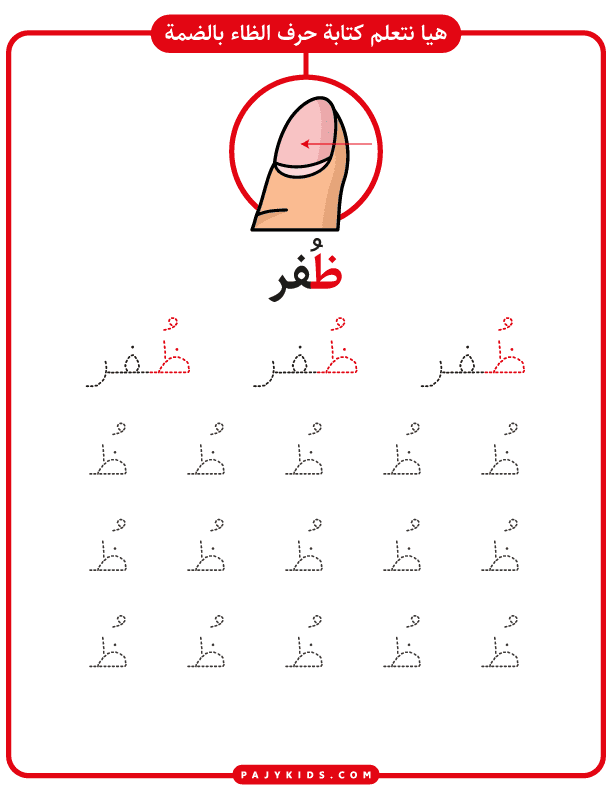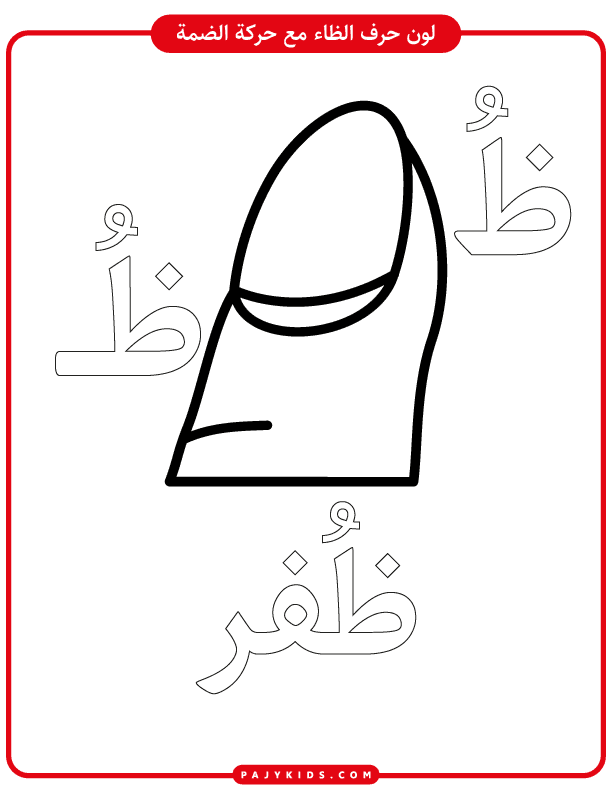Introducing the za arabic letter is an exciting step for preschool children learning the Arabic alphabet. Through colorful flashcards and fun visuals, students are introduced to the sound and shape of the letter “ظ” in a way that supports early literacy skills.
za arabic letter Educational Printables with Words and Vowels
The worksheet featuring the za arabic letter with fatḥa (ظَ) introduces the letter alongside the word ظَبْي (gazelle). Children engage by saying the sound aloud, identifying the word, and coloring both the letter and the illustration for deeper retention.
A vital activity in the worksheet is the step-by-step tracing of the za arabic letter. Children follow dotted lines that guide them in writing the letter “ظ” independently, helping them develop fine motor skills and hand-eye coordination.
Another engaging task includes practicing writing the za arabic letter with fatḥa repeatedly. This repetition strengthens memory, builds writing confidence, and allows teachers to assess student progress.
In the next worksheet, the za arabic letter with kasrah (ظِ) is introduced using the word ظِلّ (shadow). Students associate the letter’s soft kasrah sound with a real-life image, which makes learning contextual and fun.
Color, Trace, and Learn the za arabic letter for Kids
Kids practice writing the Dha letter with kasrah using guided lines. The design encourages muscle memory and reinforces proper letter formation in Arabic script.
To reinforce learning, the worksheet includes a coloring page where children color the za arabic letter with kasrah and its associated image. This fun task builds familiarity with the letter in a creative, engaging way.
The final vowel activity introduces the zaa letter with ḍammah (ظُ), paired with the word ظُفْر (fingernail). This association teaches students to differentiate between vowel marks and their corresponding sounds.
See Also: Letter Ayn
A tracing and writing section for the za alphabet letter with ḍammah gives preschoolers a structured opportunity to write and say the sound repeatedly, solidifying auditory and kinesthetic learning.
Wrapping up the series, students color the za letter with its short vowels and associated images. This visual reinforcement creates lasting associations, helping children recognize and pronounce the letter with ease in various contexts.
